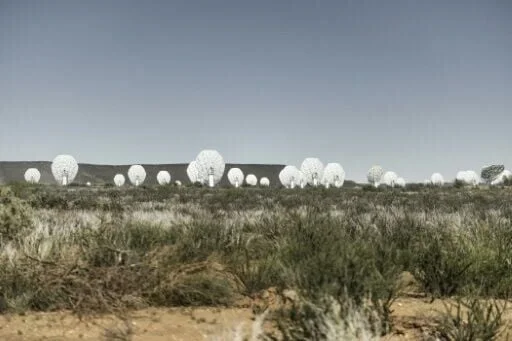
MeerKAT Telescope: Inspiring a New Generation of Astronomers in South Africa
In the heart of South Africa's Karoo region, the MeerKAT telescope is not just an instrument for space exploration; it's igniting a passion for astronomy in young minds and fostering a new generation of scientists.
This remarkable transformation unfolds as the massive radio telescope scans the cosmos, providing students with unprecedented access to the universe's greatest mysteries. The story of Lungelo Zondi, a 25-year-old operator, exemplifies this impact.
From Dreams to Reality
Lungelo Zondi, an operator at the South African Radio Astronomy Observatory (SARAO), once dreamed of exploring the stars and galaxies. Now, she controls the advanced MeerKAT telescope from her office in Cape Town. This array of 64 large antennas, each 44 feet in diameter, captures radio signals from distant stars and galaxies, bringing the universe closer to home. "It’s so interesting and fascinating! We’re collecting data from the universe," Zondi exclaims.
Forging a Path in the Stars
Since its inauguration in 2018, MeerKAT has drawn young South Africans to astronomy in droves. SARAO has awarded 1,369 scholarships to students in fields like applied mathematics, computer science, and astrophysics since 2005, creating a robust pipeline of talent. Mario Santos, a professor at the University of the Western Cape, recalls how their astrophysics group grew from one faculty member and one doctoral student in 2011 to approximately 25 students and six faculty members today.
The Square Kilometre Array (SKA) Observatory
Looking towards the future, the South African success of the MeerKAT is only the beginning stages of an ambitious project. The 64 antennas of MeerKAT represent the first phase of what will become the Square Kilometre Array (SKA) Observatory. When completed by 2030, the SKA will be the world’s most powerful ground-based radio telescope, connecting 133 South African dishes with over 131,000 antennas in Australia. This combined power seeks to help scientists peer billions of years back in time to observe stars and galaxies when they “began to light up the darkness.”
More Than Just a Telescope
MeerKAT's impact extends beyond scientific discovery. It provides opportunities in a country where young people often face challenges in finding meaningful careers. Adrian Tiplady, SARAO's deputy CEO, highlights that MeerKAT helps in building “a time machine” that will detect radio signals that have traveled through the universe since its birth. The Karoo region, chosen for its radio quiet zone, allows MeerKAT to operate without interference, capturing the whispers of distant galaxies.
A Beacon of Scientific Excellence
South Africa's success with MeerKAT serves as an inspiration for other African nations to invest in science and technology. Tiplady proudly states, "It’s a true marvel of scientific and technical excellence, We’re proud that South Africa is part of it."
What impact do you believe MeerKAT and similar scientific initiatives will have on inspiring future generations in STEM fields? How can these projects be used to create more opportunities for young people in developing countries?
Share your thoughts and join the conversation in the comments below!